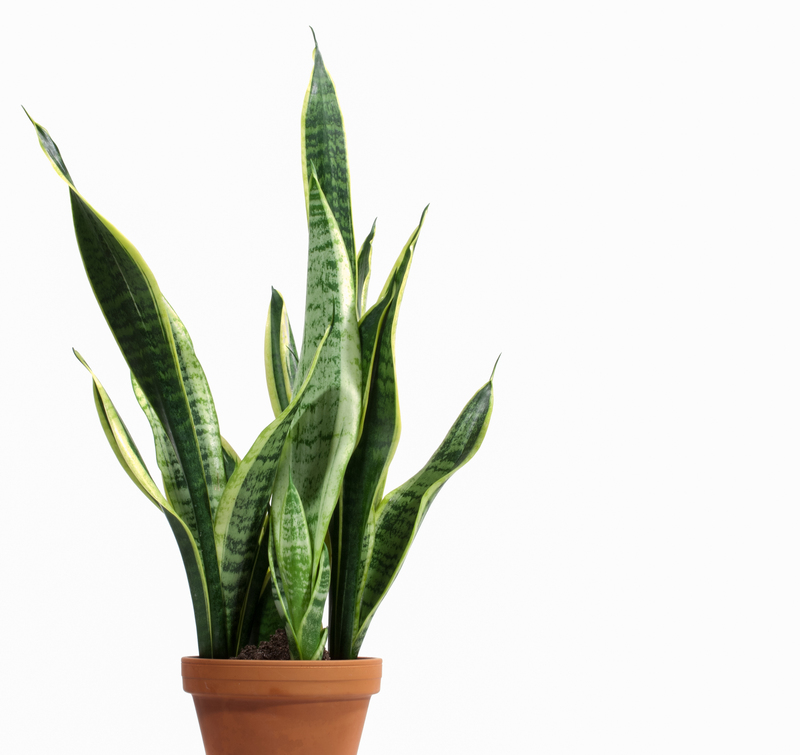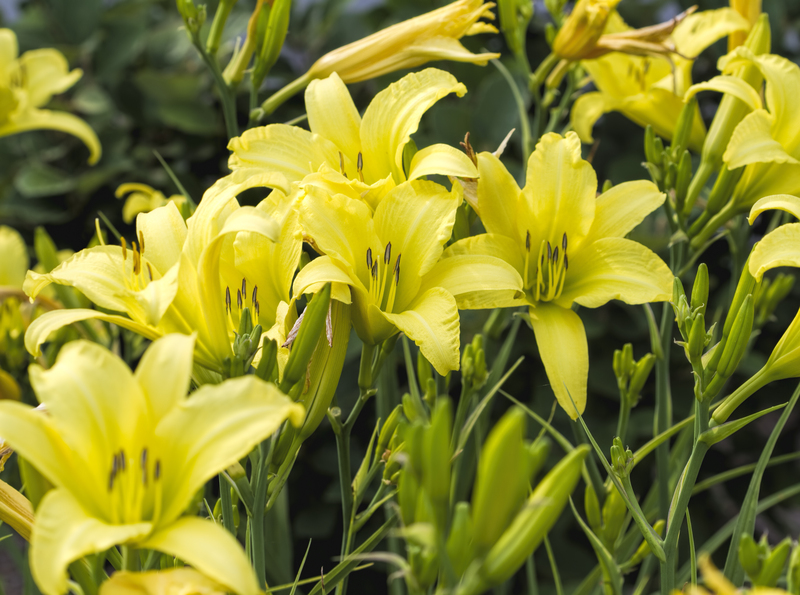Dog-Proofing Your Garden Paradise
Posted on 25/06/2025
If you love gardening and have a canine companion, you know that achieving harmony between your beautiful landscape and your playful pooch can be a real challenge. Dogs are naturally curious, sometimes mischievous, and always looking for adventure--unfortunately, your carefully cultivated flower beds and vegetable patches may be their favorite playground. That's why dog-proofing your garden paradise is not just a luxury; it's a necessity. In this comprehensive guide, you'll discover practical, humane, and effective strategies for creating a dog-friendly garden that everyone can safely enjoy.
Understanding Why Dogs Love Your Garden
Before you start dog-proofing your garden, it's crucial to recognize why your four-legged friend is attracted to it in the first place:
- Scent Exploration: Gardens bristle with fascinating smells that dogs simply cannot resist.
- Digging Instincts: Many breeds are natural diggers, seeking cool dirt or hiding spots for treasures.
- Chasing Critters: Squirrels, birds, and insects in your garden fuel your dog's prey drive.
- Chewing and Sampling: Dogs often chew plants and mulch while exploring or relieving boredom.
- Social Reasons: Sometimes, your dog just wants to be where you are--your garden.
Understanding your dog's garden behavior is the first step towards creating a harmonious outdoor space.

Assessing Your Garden for Dog Hazards
Dog-proofing your garden oasis begins with a thorough safety check. Many common plants, chemicals, and landscaping features pose hidden dangers to pets. Here's a checklist to assess your space:
- Check for Toxic Plants: Identify and remove or relocate plants such as lilies, foxgloves, and sago palms.
- Review Mulch and Compost Areas: Some mulches, like cocoa mulch, are harmful to dogs, as is moldy compost.
- Secure Garden Chemicals: Store all fertilizers, pesticides, and herbicides out of pet reach.
- Watch Out for Sharp Tools: Keep garden tools locked away or in a secured shed.
- Identify Physical Risks: Exposed thorny plants, unstable fencing, or deep ponds can be hazardous.
A dog-safe garden should eliminate or minimize these risks. Make a list of what needs to change for your pet-friendly paradise.
Designing A Dog-Proof Garden Layout
A thoughtful garden design is the foundation of a long-lasting balance between your garden paradise and your pet's habits. Here is how you can create a space where both flowers and Fido flourish:
Create Clear Boundaries
- Physical Fencing: Install secure, gap-free fencing that is high enough (at least 1.2 meters for most breeds) to prevent jumping or climbing. Choose materials like wood, vinyl, or sturdy metal.
- Plant Barriers: Use hedges or dense shrubs (such as boxwood or lavender) as living barriers around sensitive beds.
- Decorative Edging: Stone, brick, or metal landscape edging adds an extra layer of protection to vulnerable plants.
Establish Dedicated Dog Zones
One of the most effective dog-proofing strategies is to create special areas just for your pooch:
- Dog Paths: Dogs often patrol perimeter paths. Encourage this with clearly defined mulch, gravel, or stepping stone paths they can call their own.
- Digging Pit: Channel digging urges with a sand or soil-filled pit where your dog is allowed to dig.
- Shady Resting Area: Place a doghouse or shaded patch with clean water for hot summer days.
- Play Area: Add durable toys or even agility equipment for exercise and enrichment.
By dog-proofing your backyard with thoughtful zones, you make it easier for your dog to respect boundaries and reduce unwanted behavior.
Choosing Dog-Friendly Plants and Materials
Your plant choices matter when building a pet-safe garden. Select plants that are non-toxic, hardy, and resistant to trampling.
- Safe Plant Choices: Some examples include marigolds, sunflowers, snapdragons, fuchsias, and roses (cautiously, due to thorns).
- Robust Ground Covers: Try clover, Irish moss, or creeping thyme--these are less likely to be damaged by paws.
- Tough Lawn Varieties: Bermuda and Kentucky bluegrass are hardy options for high-traffic areas.
- Avoid Toxic Species: Always cross-check with the ASPCA's toxic plant list before planting anything new.
Non-plant materials are equally important for a dog-resistant garden:
- Paw-Friendly Mulch: Choose shredded pine, cedar, or hemlock bark. Avoid cocoa mulch entirely.
- Safe Hardscaping: Use smooth stones, bricks, or pavers that won't burn paws or trap claws.
- No-Thorn Zones: Place prickly plants out of reach or avoid entirely.
Protecting Your Garden Beds and Produce
If you grow vegetables, herbs, and flowers, you want them to thrive--without your dog's interference. Here are targeted tips for protecting your garden beds:
Use Raised Beds
Raised beds deter dogs from walking through, digging up, or urinating on your crops. Build beds at least 30-40cm high using strong, non-toxic wood or composite.
Install Plant Covers and Netting
Fine mesh, garden netting, or even wire hoops can protect seedlings and delicate herbs from canine curiosity.
Natural Repellents
Sprinkle ground black pepper, citrus peels, or diluted vinegar around the edges of sensitive beds--dogs dislike these scents and will usually keep away. Rotate repellents for best results.
Barrier Plants
Use pungent or textural plants such as rosemary, lavender, or decorative grasses as living barriers--most dogs dislike walking through them.
Training Your Dog for Garden Success
No garden-proofing solution is complete without consistent training. Here's how to teach your dog to respect your garden:
- Set Clear Rules: Lead your dog on a leash and show them where they are and are not allowed to go.
- Use Positive Reinforcement: Reward your dog with treats and praise for staying out of off-limit beds.
- Redirect Bad Behavior: Immediately guide your pet to their designated area if they cross a boundary, then reward them there.
- Provide Supervision: Keep a close eye in the early days. Gradually lengthen unsupervised access as good habits develop.
- Stay Consistent: All family members should enforce the same rules to avoid confusion.
*Training is most effective when paired with physical dog-proofing measures.* Start early for the best chance at a harmonious dog and garden relationship.
Solving Common Dog-Related Garden Problems
Even with training and good design, you may encounter some challenges as you work to dog-proof your garden:
Digging
Dogs dig for fun, exploration, or comfort. To manage this:
- Provide a designated digging pit and bury toys for them to find.
- Make off-limit areas unappealing with rocks or chicken wire just under the soil's surface.
- Increase exercise--tired dogs dig less.
Chewing Plants
Address this by removing and replacing chewed plants with safe, bitter-tasting alternatives, and offer appropriate chew toys.
Trampling
Use strong border plants or place decorative stones to physically discourage walking through beds. Dog-specific paths can help minimize accidental trampling.
Yellow Spots on Lawn
Dog urine can burn grass. Train your dog to use a designated potty area, and water spots after each use to dilute urine.
Additional Dog-Proofing Tips & Tricks
- Supervise Young Dogs: Puppies are especially destructive. Don't allow unsupervised access until fully trained.
- Rotate Toys Regularly: Keep your dog entertained with new and interesting items to prevent boredom in the garden.
- Block Gaps Under Fences: Use landscaping, rocks, or concrete to prevent escape attempts.
- Secure Trash and Compost Bins: Dogs will root through unsupervised bins. Choose pet-proof containers or locate out of reach.
- Protect Ponds and Pools: Cover or securely fence any water features to avoid accidental falls or drinking.
Seasonal Maintenance for a Dog-Proof Garden
Dog-proofing your garden retreat isn't a one-time job. Seasonal checks and maintenance will keep your outdoor space safe and beautiful all year long:
- Spring: Remove debris, re-check fences, replenish safe mulch, and plant hardy, dog-friendly varieties.
- Summer: Ensure shade and water are always available. Watch for insecticides or toxic lawn treatments.
- Autumn: Remove fallen fruit and harmful mushrooms. Tidy beds and prepare covers for winter.
- Winter: Watch for icy patches that could cause slips. Store all tools and chemicals out of reach.
Dog-Proof Garden Paradise: Success Stories and Inspiration
Many dog owners have succeeded in creating breathtaking, safe outdoor spaces with their pets. Look for inspiration in garden design books, online forums, and local dog-friendly gardens. Share your own progress and get advice from fellow green-thumbed pet parents--a dog-proof backyard is a journey worth sharing!

Conclusion: Enjoying Your Dog-Proof Garden Paradise
Balancing your love for gardening with your passion for pets is entirely possible. By carefully analyzing your dog's habits, choosing safe plants and materials, designing with both function and safety in mind, and using positive reinforcement, you'll create a dog-proof garden paradise everyone can enjoy. With these tips, you no longer have to choose between a beautiful garden and a happy, healthy dog--you truly can have both!
Start dog-proofing your garden today, and discover the joy of a harmonious, safe outdoor sanctuary for you and your furry friend.
Frequently Asked Questions: Dog-Proofing Your Garden
- What are the most toxic garden plants for dogs?
Lilies, azaleas, oleander, foxglove, and sago palm are especially toxic. Always check before planting new species. - How high should a garden fence be to keep my dog in?
For most medium to large breeds, at least 1.2 meters (4 feet) is recommended. If you have a jumper or climber, consider an inward-angled topper. - How do I stop my dog from digging in my garden?
Designate a digging spot, provide plenty of exercise and mental stimulation, and cover sensitive areas with rocks or netting. - What can I use for pet-safe weed and pest control?
Manual weeding, mulching, neem oil, and diatomaceous earth are safe, dog-friendly options. Avoid chemical products whenever possible.
For more resources on dog-proofing your garden, consult your veterinarian, local gardening center, or pet-friendly landscaping professionals. Happy gardening!

